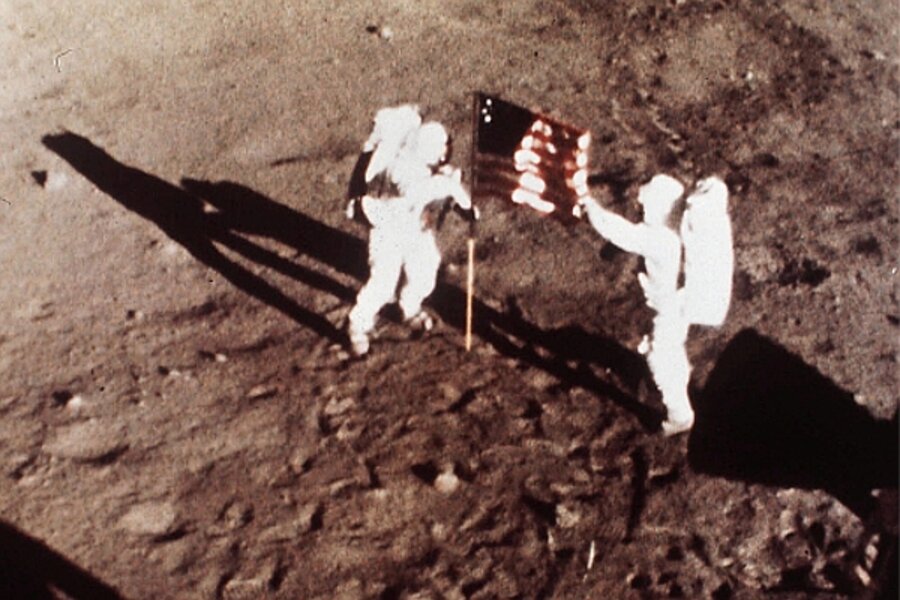NASA's big decision: Build a moon base or lasso an asteroid?
Loading...
While NASA's proposed budget for 2014 unveiled this week reaffirms the space agency's ambitious plan to send astronauts to an asteroid, some members of Congress are pushing for a more familiar goal: a moon base by 2022.
President Barack Obama's federal budget request for 2014, released Wednesday (April 10), gives NASA $105 million to jump-start a bold plan to park an asteroid near the moon. Astronauts would then explore the space rock using the agency's Space Launch System rocket and Orion capsule, with the first visit perhaps coming as early as 2021.
The proposed "Asteroid Initiative" lines up with the manned spaceflight priorities of the Obama Administration, which three years ago cancelled NASA's moon-oriented Constellation program and directed the agency to get astronauts to an asteroid by 2025, then on to the vicinity of Mars by the mid-2030s.
But some lawmakers contend that the moon should still be NASA's immediate human spaceflight target. They have reintroduced a 2011 bill called the RE-asserting American Leadership in Space Act (or REAL Space Act for short), which asks NASA to send astronauts to the moon by 2022 with the goal of establishing a long-term settlement there.
"The moon is our nearest celestial body, taking only a matter of days to reach," Rep. Bill Posey (R-Fla.) said in a statement Wednesday. "In order to explore deeper into space — to Mars and beyond — a moon presence offers us the ability to develop and test technologies to cope with the realities of operating on an extraterrestrial surface."
The bill would also give NASA's manned spaceflight efforts more direction, its sponsors say.
"This legislation is not just about landing another human on the moon. It is about restoring our nation’s now-defunct human spaceflight program and setting clear and achievable goals that will lead to advancements in science and technology," said Rep. Rob Bishop (R-Utah). "This legislation restores and clarifies NASA’s role in human spaceflight and sets the US back on course to lead exploration of the cosmos."
Astronauts have not walked on the surface of the moon since NASA's Apollo 17 mission in 1972, which marked the final lunar landing mission of the Apollo program.
In 2004, NASA unveiled its Constellation program that aimed to return astronauts to the moon by 2020 using a new family of rockets, the Ares I and Ares V, as well as new Orion space capsules and moon landers. In 2010, however, the Obama Administration replaced that program with the asteroid-oriented spaceflight goal NASA is currently pursuing.
The current space vision still includes the Orion capsules, but replaces the Ares rockets with a single mega-rocket called the Space Launch System. The first manned flight of the complete Orion-Space Launch System is expected in 2021.
NASA's focus on getting humans to a near-Earth asteroid and Mars makes an American-led manned moon mission unlikely anytime soon, agency chief Charles Bolden reportedly said earlier this month.
"NASA will not take the lead on a human lunar mission," Bolden said during a joint meeting of the Space Studies Board and the Aeronautics and Space Engineering Board on Thursday (April 4), according to a SpacePolitics.com report by Jeff Foust. "NASA is not going to the moon with a human as a primary project probably in my lifetime. And the reason is, we can only do so many things."
Follow Mike Wall on Twitter @michaeldwall. Follow us @Spacedotcom, Facebook or Google+. Originally published on SPACE.com.
- 3D-Printing a Future Moon Base (Gallery)
- Why Go Back To The Moon? Retracing The Last Footsteps | Video
- 10 Best Space Apps in the Universe
Copyright 2013 SPACE.com, a TechMediaNetwork company. All rights reserved. This material may not be published, broadcast, rewritten or redistributed.







